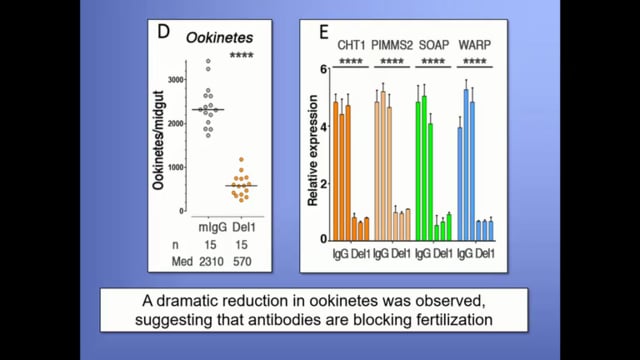Last Updated: 02/12/2024
Understanding the human antibody response to a malaria transmission-blocking vaccine
Objectives
This project aims to understand the antibody response generated against Pfs48/45 in vaccinated volunteers and use this information to help design better vaccines. This will significantly enhance current understanding of the human immune response to Pfs48/45, as most of the knowledge is currently based on pre-clinical studies, which might not be representative of how the human immune system would react and which areas of Pfs48/45 human antibodies might target.
Malaria still kills over 620,000 people a year in some of the poorest nations on earth, with over 75% being children. Malaria is an ancient and complicated parasite that is transmitted by bites of infected mosquitoes when they feed on human blood, hence much effort has been aimed directly as the mosquito itself with some success. Whilst there has been progress to reduce the death toll of this disease, progress is faltering and made worse by the prospect of insecticide resistant strains of mosquitoes and drug resistant parasites. As has been demonstrated many times in the past and the recent Covid-19 pandemic, vaccines are one of the most effective weapons to combat any infectious disease. However despite huge efforts over the past 50 years progress has been limited, with only recently vaccines offering protection from life-threatening malaria infections. To improve the protection that vaccines can provide against malaria, the goal of the scientific community is to make a multi-component vaccine that targets the different life cycle stages of the parasite. Malarias life cycle is complex, with an asexual stage in the human host and a sexual stage in the mosquito midgut.
90 monoclonal antibodies will be cloned from human PBMCs. B cells will be isolated using fluorescent-sorting, gating using a B cell marker and fluorescently labelled Pfs48/45-containing tetramers. IgG variable regions will be amplified by RT-PCR and sequenced. Heavy and light chain V(D)Js will be inserted into Fc-containing plasmids, expressed in HEK293 cells and purified by protein G chromatography. The standard membrane feeding assay will be used to evaluate the ability of sera and the monoclonal antibodies to block transmission of P. falciparum . Stage V gametocytes will be mixed with purified monoclonal antibodies or IgG from serum samples and then fed to 4-6 days old starved female Anopheles stephensi (SDA 500) mosquitoes. After 8 days, midguts from 20 mosquitoes per group will be dissected, oocysts counted, and the number of infected mosquitoes recorded. SPR will be conducted on a Carterra LSA platform, capable of immobilising 384 samples for high throughput determination of binding kinetics and competition. Electron microscopy polyclonal epitope mapping will use polyclonal sera, from which Fab fragments will be produced by enzymatic cleavage. These will be incubated with Pfs48/45 already complexed with mAbs of known epitope as markers. Complexes will be purified by size exclusion chromatography and structures determined by negative stain electron microscopy and single particle analysis. To determine crystal structures, Fab fragments will be produced by papain cleavage and bound to Pfs48/45. Complexes will be assembled and purified by size exclusion chromatography and crystallised. Synchrotron data will be used to determine structures, with phase information derived by molecular replacement, using our existing Pfs48/5 structures. To thermally stabilise Pfs48/45, we will use Rosetta-based protein design tools, employed through the PROSS methodology. Designs will be selected to increase domain stability and to lock together domain interfaces.
Apr 2023 — Mar 2026
$854,512


